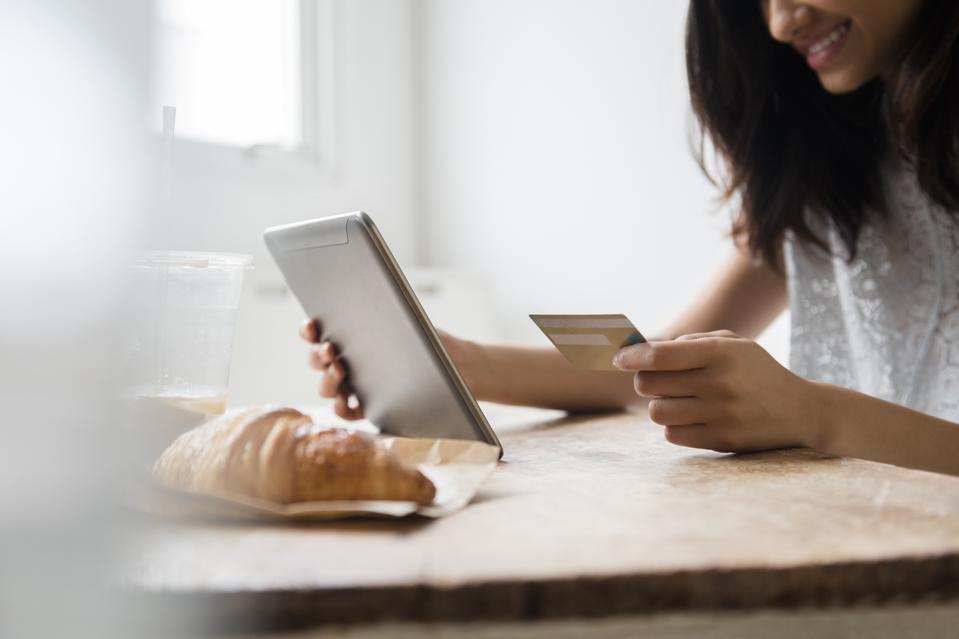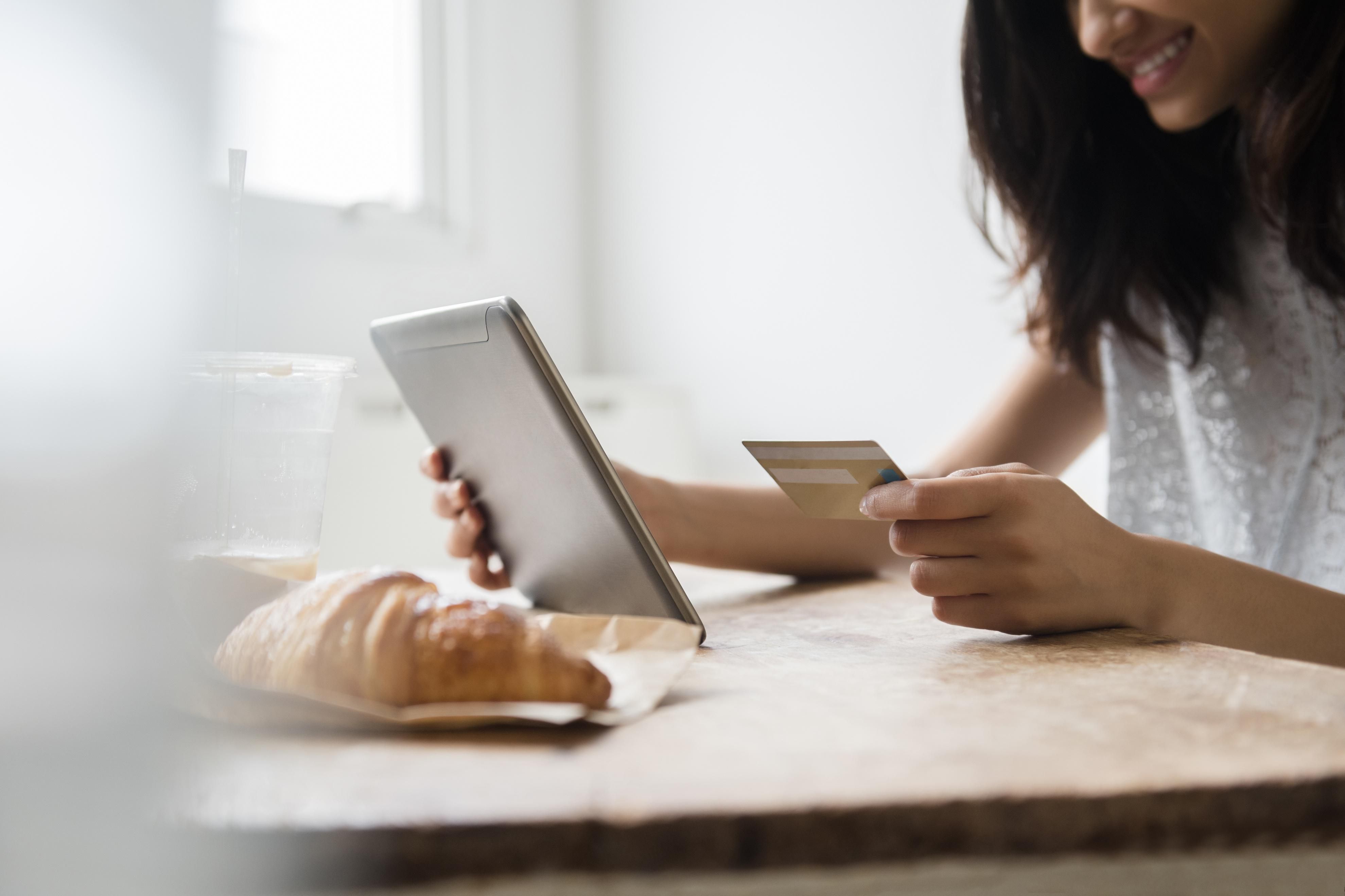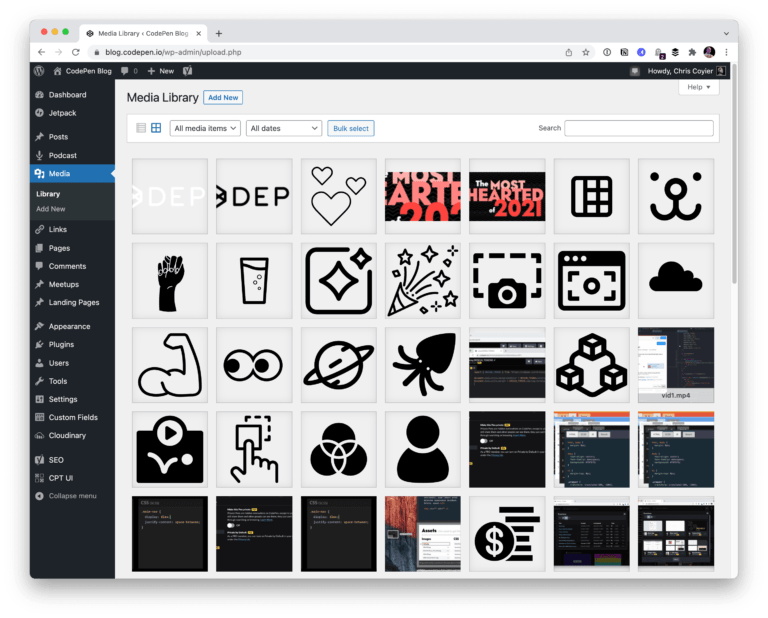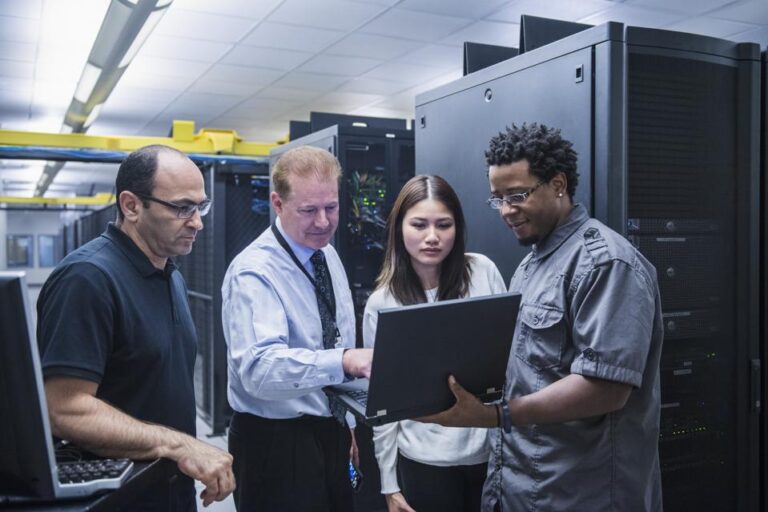Retail brands are using insights from their real-time data to transform the customer’s experience.

Consumer behaviors shifted significantly during the pandemic. How brands utilized their real-time data and reimagined the shopping experience was critical to their success.
getty
This past year, we’ve lived through remote work and virtual schooling, signed up for contact tracing apps, and became familiar with ordering goods online and picking up in person. How we see the world has changed—we’re much more aware of how our physical and digital experiences interconnect.
This heightened awareness has extended to how and what we buy. Over the past year, companies have become used to providing new details about service and delivery to customers. Information about product safety and origins and sustainability is in demand as consumers change their habits and buying behavior to better reflect their values. Retailers have become more transparent around once-obscure issues like sourcing and supply chains. They’re experimenting with blurring brick and mortar and online shopping to meet new consumer expectations amidst the acceleration of e-commerce. The circumstances of the past year have offered a valuable nudge to reimagine how to connect with customers, deliver a broader range of experiences, and commit to the ever-rising bar for how to be helpful.
Modern cloud technology offers a lot of benefits for retailers, among them the ability to understand customer signals from a huge variety of data.
All of this means that the future of shopping places more emphasis on technology teams, as well as designers and marketers, to stay aware and innovate at a pace faster than today’s modern consumer. Modern cloud technology offers a lot of benefits for retailers, among them the ability to understand customer signals from a huge variety of data.
Here are three ways brands are using insights from their real-time data to transform the retail experience.
More dynamic, quick-turnaround personalization
Table of Contents
North American home and furniture retailer Crate & Barrel has recognized the important edge their real-time data has given them to better understand their customers, leading them to reimagine the customer experience both online and in-store.
“To achieve a rich, personalized customer experience, it’s critical that organizations gather the right data in real time from their various touchpoints, and then create a single data source that represents a full view of the customer,” Nari Sitaraman, Chief Technical Officer at Crate & Barrel, wrote recently.
Online sales at Crate & Barrel grew 40% during the pandemic. The company sees this as a gateway to a new kind of hybrid consumption, merging physical and digital spaces, with an opportunity to further transparency and personalization. “Finding a way to marry the inspirational nature and knowledge of physical retail with the richness and personalization of online retail—this is the future of online shopping,” said Sitaraman.
Acting on digital insights gained from real-time analysis has allowed Crate & Barrel not only to reimagine their website design based on what’s most important to customers. Using the BigQuery data warehouse, they are analyzing 10x more data than before, and in turn using machine learning capabilities to present more offers and interactions.
Physical retail locations and even catalogs respond, too. For example, online data about customer shopping habits enabled experimentation with content placement in different types of catalogs aimed at different types of customers, such as pet owners or people with young children, leading to a direct marketing performance improvement of 50 basis points. Gathering data from once-siloed sources has improved advertising, doubling its return on advertising spent while increasing expenditure by 20%.
Related: Learn more about Crate & Barrel’s use of data analytics technology to create a strategic advantage by visiting the customer story on Think with Google
The line between physical & digital shopping, reimagined
While the shift to blended digital and physical experiences may feel like a symptom of the pandemic, some business leaders feel it’s been a long time coming—even for the automotive industry, which is traditionally one of the most physical and location-based shopping experiences.
“COVID was almost an endorsement of what we had been telling auto retailers for years,” says Russell Warman, the head of Infrastructure and Operations at Auto Trader, which connects auto dealers and consumers in the United Kingdom’s largest car marketplace. “The ecosystem of retailers acquiring automotive, getting them ready, and delivering them to customers has changed.”
Dealers on Auto Trader used to show three images of a car online, knowing that interested customers would next visit the physical showroom. Now they show 100. They also include personal reviews, special online walk-through videos, and other mechanisms that help build a virtual “on-the-lot” relationship with customers, as that is increasingly the only relationship they will have.
As part of this transition, Auto Trader has trained over 250 employees on Looker, a powerful data analysis tool that tracks things like inventory levels and customer preferences in real time to keep dealers up to date. For instance, demand for electric vehicles is up by 10%, signaling an increase in interest for more sustainable options, which dealers can use to influence how they sell and what inventory they buy in the future.
Delivering customer experiences in new ways
Brazil’s Magazine Luiza has operated retail stores for over 60 years. Over the past decade, it has transformed itself into an online and mobile powerhouse, using online and mobile capabilities aided by machine learning algorithms to better serve customers with more relevant product selection and product availability. At the start of the pandemic, when it had to shut all of its 1,300 stores, the retailer was prepared: it added to the number of items it sold online, and developed an application that enabled 14,000 other physical retailers to work online. Some 47,000 third-party sellers now operate on its online marketplace.
As the country slowly reopens, Magazine Luiza is merging its physical stores with this online marketplace. In addition to providing traditional retail functions, their brick and mortar footprints are becoming hubs for exhibition sale, drop off, and delivery of various categories of marketplace items. In a recent study conducted by Google Cloud, in partnership with R/GA – International Consultancy agency-where the performance of the 25 Brazilian ecommerces were monitored during the last Black Friday season, it is possible to see that there is still room for improvement. Delivery time, for instance, varied from 1 to 13 days even in cities like São Paulo (the main financial center in Brazil) and only 9 out of 25 brands offered pick-up store service.
Companies are seeing an opportunity to deliver a better experience and are working on it. Customers can increasingly expect same-day delivery not only from Magazine Luiza, but from its marketplace partners. As the company sees it, guaranteed timely delivery is now a critical element of the shopping experience, whether an item is purchased online or in-person.
Related: Magazine Luiza: How we transformed our e-commerce platform with Apigee, Firebase, and GCP
As with so much of life post-COVID, it’s not certain how consumer behavior will continue to evolve over the next few years. That’s why it’s critical for brands to look to real-time data and insights to discover patterns so they can anticipate what’s needed to serve their customers—whatever the now, next, and future normal may look like.
Learn what’s next in the industry. Our Retail & Consumer Goods Summit will give attendees key insights into the latest trends from the industry’s leading executives. Register here.






